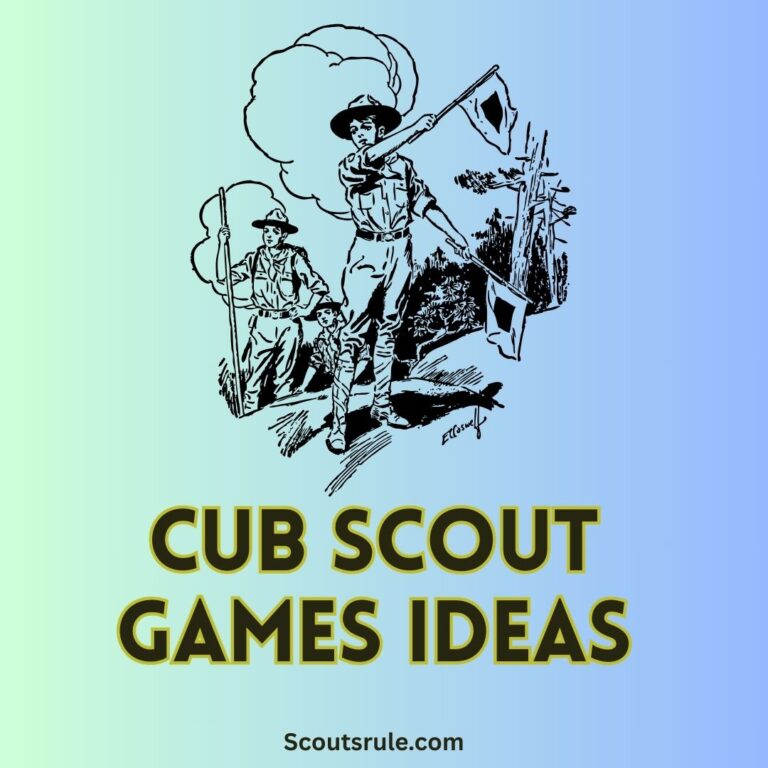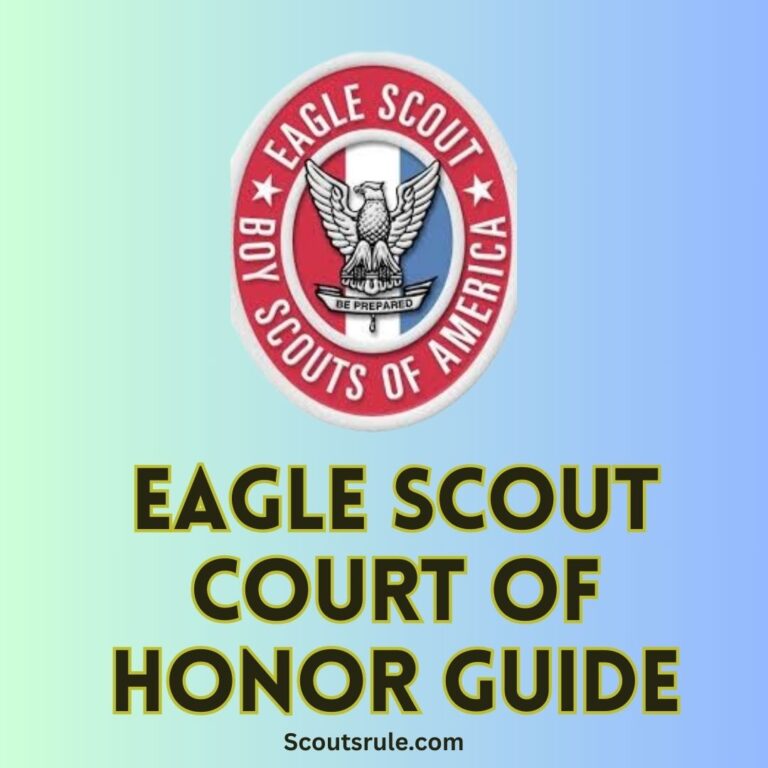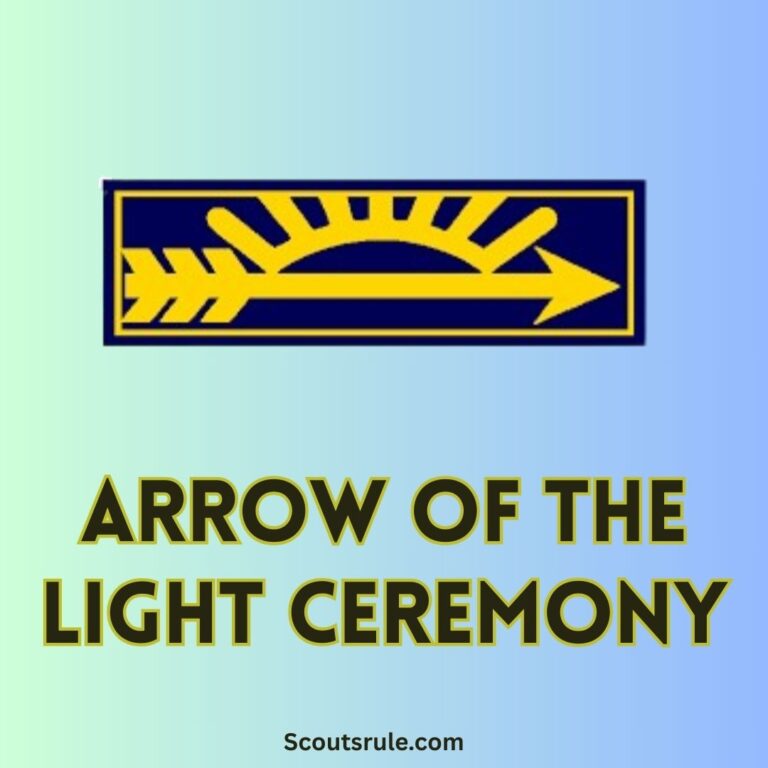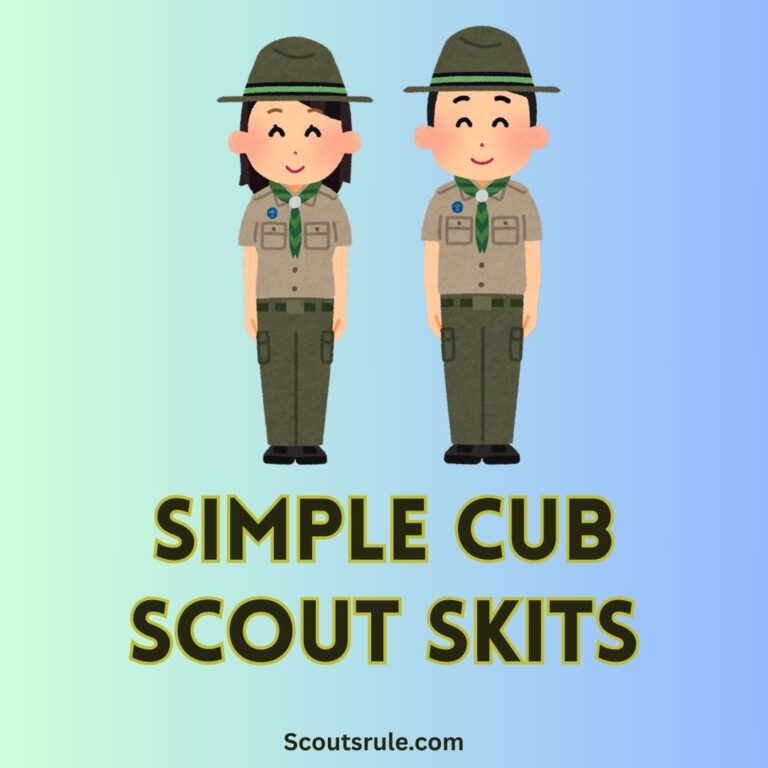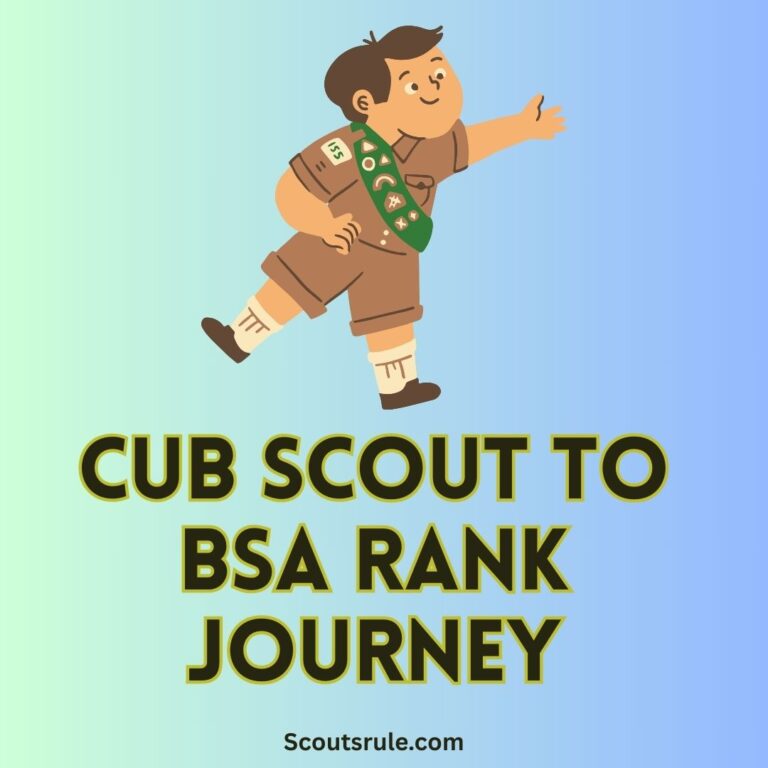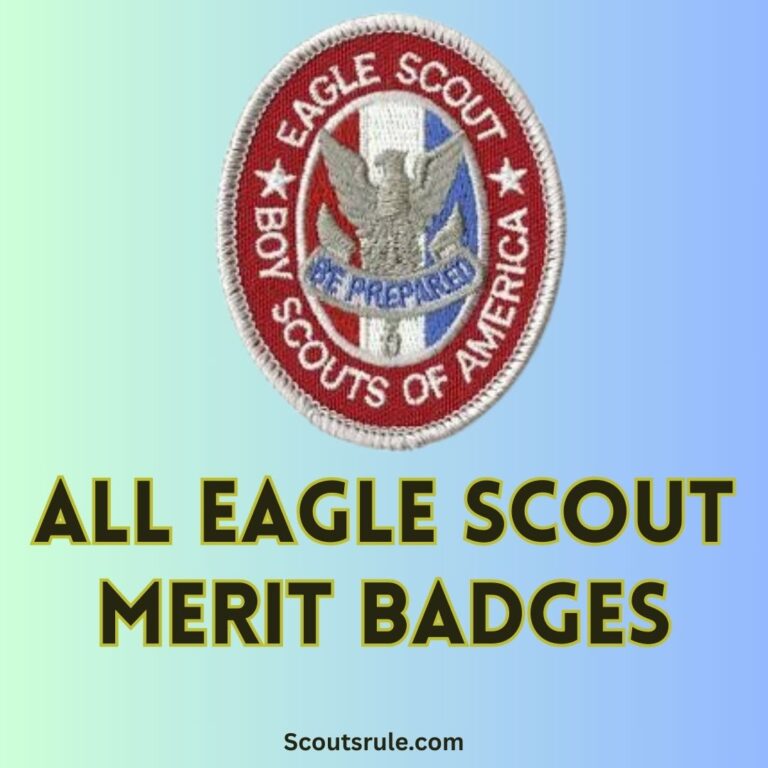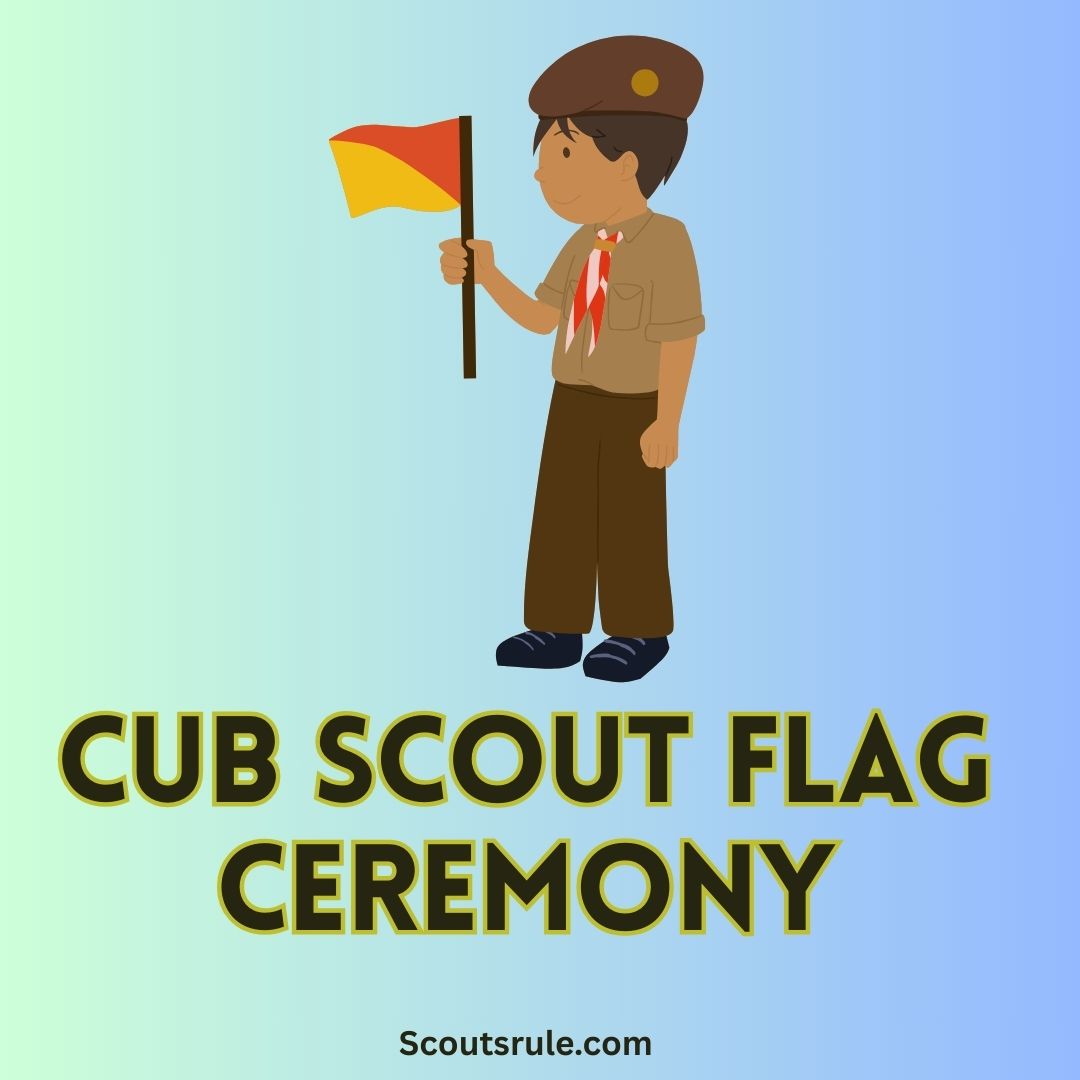
A well-planned flag ceremony is an important tradition in Cub Scouting, instilling pride, respect, and teamwork among Scouts. With a clear structure and strong adherence to flag etiquette, a flag ceremony becomes a meaningful way to honor our national symbols and reinforce Scouting values. This guide outlines the essential components for planning and conducting the ceremony.
A Cub Scout flag ceremony is a meaningful tradition that teaches Scouts respect, teamwork, and patriotism. Below is a simple guide to conducting a Cub Scout flag ceremony, which can be used for den or pack meetings:
Post Contents
Preparation
- Materials Needed:
- U.S. flag
- Pack or den flag (optional)
- Flag stands (if indoors)
- Space for Scouts to line up and march
- Roles:
- Color Guard: Scouts responsible for carrying and presenting the flags.
- Caller: A Scout or leader who gives commands and leads the ceremony.
- Audience: Other Scouts, leaders, and attendees who participate by standing respectfully.
- Practice: Ensure the Color Guard knows their roles and the commands. Practice marching, handling the flags, and following the whistle or verbal commands.
Opening Flag Ceremony
- Assembly:
- The Caller announces, “Please rise for the presentation of the colors.”
- The Color Guard lines up at the back of the room, holding the flags.
- Presentation of Colors:
- The Caller commands, “Color Guard, advance.”
- The Color Guard marches to the front of the room and places the flags in their stands (if indoors) or prepares to raise them (if outdoors).
- Pledge of Allegiance:
- The Caller says, “Scout salute. Please join me in the Pledge of Allegiance.”
- Everyone recites the Pledge of Allegiance. Scouts in uniform salute; others place their right hand over their heart.
- Scout Oath or Law (Optional):
- After the Pledge, the Caller may lead the group in reciting the Scout Oath or Scout Law.
- Closing the Ceremony:
- The Caller commands, “Color Guard, retire the colors.”
- The Color Guard retrieves the flags and marches out of the room.
- The Caller concludes with, “You may be seated.”
Closing Flag Ceremony (Optional)
For a closing ceremony, the process is similar but in reverse:
- The Caller announces, “Please rise for the retiring of the colors.”
- The Color Guard retrieves the flags and marches out.
- The Caller concludes with, “Thank you. You may be seated.”
Tips for Success
- Respect the Flag: Teach Scouts proper flag etiquette, such as never letting the flag touch the ground and folding it correctly.
- Adapt to Your Space: If the meeting location doesn’t have a flagpole or enough room for marching, adapt the ceremony by using a small flag or stationary presentation.
- Engage the Scouts: Rotate roles so all Scouts have a chance to participate as the Color Guard or Caller.
Cub Scout Flag Ceremony Planning
1. Bridging Ceremonies
Bridging ceremonies serve as transitions that link different parts of a flag ceremony or connect segments of a larger program. In a Cub Scout flag ceremony, these might be used to connect the roundtable discussion with the formal opening or closing of the flag ceremony. Their purpose is to provide seamless transitions, ensuring that each phase flows respectfully into the next. For example, a brief moment of silent reflection or a symbolic gesture (such as a salute) can serve as a “bridge” between segments.
2. Flag Ceremony Terms
A clear understanding of flag ceremony terminology is essential to conduct a respectful and smooth ceremony. Here are some of the key terms:
- Color Guard: The group of Scouts responsible for carrying, presenting, and retiring the flag.
- Flag Presentation/Display: The act of raising the flag and setting it up in a place of honor.
- Flag Retiring: The proper method for lowering and folding the flag when the ceremony ends.
- Roundtable: A brief discussion or meeting held as part of the ceremony (often used to share reminders, reflections, or inspirational words).
- Switcher/Bridger: Any transitional signal or act that moves the flow from one portion of the ceremony to another.
3. Cub Scout Roundtable
The Cub Scout Roundtable is a segment during the ceremony where leaders and Scouts come together for discussion. At the roundtable, topics might include:
- Sharing the meaning behind the flag,
- Discussing the principles of Scouting,
- Reflecting on recent achievements or upcoming events, or
- Reminding everyone of proper flag etiquette.
The roundtable is typically informal and encourages participation, ensuring that each Scout understands the importance of the ceremony and feels connected to the team.
4. Cub Scout Opening Flag Ceremony
The opening flag ceremony sets the respectful tone for the meeting and begins with a call to attention:
- Assembly:
- Scouts are asked to stand in an orderly fashion.
- The Caller announces, “Please rise for the presentation of the colors.”
- Presentation of the Colors:
- The Color Guard advances with the flag(s) carefully carried.
- The flag is displayed prominently (e.g., raised on a flagpole or placed in a designated stand).
- Flag Salute and Pledge:
- Scouts salute if in uniform (or follow proper hand-over-heart protocol if not).
- The Pledge of Allegiance is recited together.
- Optional Roundtable Discussion:
- The Caller or Cub Scout leader may facilitate a brief roundtable discussion on the significance of the flag and its connection to Scouting values.
- Transition:
- The ceremony then smoothly transitions into meeting business or other program activities.
5. Cub Scout Closing Flag Ceremony
When closing the meeting, the flag ceremony reads as follows:
- Preparation to Retire the Colors:
- The Caller announces, “Please rise as we retire the colors.”
- Retiring the Colors:
- The Color Guard carefully collects the flag.
- The flag is lowered (or staged) according to proper protocol.
- Folding of the Flag (if applicable):
- The flag is folded using the proper method, ensuring it is neat and respectful.
- Final Salute or Moment of Reflection:
- Scouts may be asked to take a moment of silent reflection or recite a concluding message before seating.
- Dismissal:
- The Caller formally dismisses the group once the flag has been retired.
6. Flag Ceremony Etiquette
Adhering to proper flag ceremony etiquette is critical to showing respect for the flag and the ceremony itself. Here are key guidelines:
- Respect and Customization:
- Flag ceremonies ought to be respectful and tailored to the specific Scouts participating. They should reflect community values and the significance of the flag.
- Flag Must Not Touch the Ground:
- Under no circumstance should the flag be allowed to touch anything below it (such as the ground, floor, or any surface) during presentation, retirement, or handling.
- No Additions to the Flag:
- Never attach or include any items (such as additional decorations or emblems) to an American flag. It must remain pure and unaltered.
- Not a Costume Piece:
- The flag is a symbol of honor and is not meant to be worn as a costume. It should be displayed properly—not used for casual wear.
- Position of Honor:
- The flag must always occupy a position of honor. It should be displayed at the highest point possible and treated with the utmost respect.
- Proper Retirement:
- When retiring the flag, do so in a careful and respectful manner. This signals the end of the ceremony and honors the flag.
- Whole or In Pieces:
- The flag may be retired as a whole or, in some protocols, separated into pieces according to the method prescribed by official guidelines.
- Reduced Daily:
- “Reduction” of the flag may refer to lowering it properly at the end of the day. Daily routines should include a respectful lowering of the flag.
- Proper Folding:
- The American flag must be folded properly, following official instructions (usually into a triangular fold) to preserve its dignity.
- Carrying When Folded:
- A folded flag is to be carried against the chest as a mark of respect and honor.
Conclusion
A flag ceremony is a simple yet powerful way to instill values of respect and patriotism in Cub Scouts. It also helps them build confidence and teamwork skills. If you’d like a printable script or additional variations, let me know!

Hi, Robin here, A former lead Scout and here I share my inspiring stories about USA Scouts, leadership, adventure, how to guides and more.

